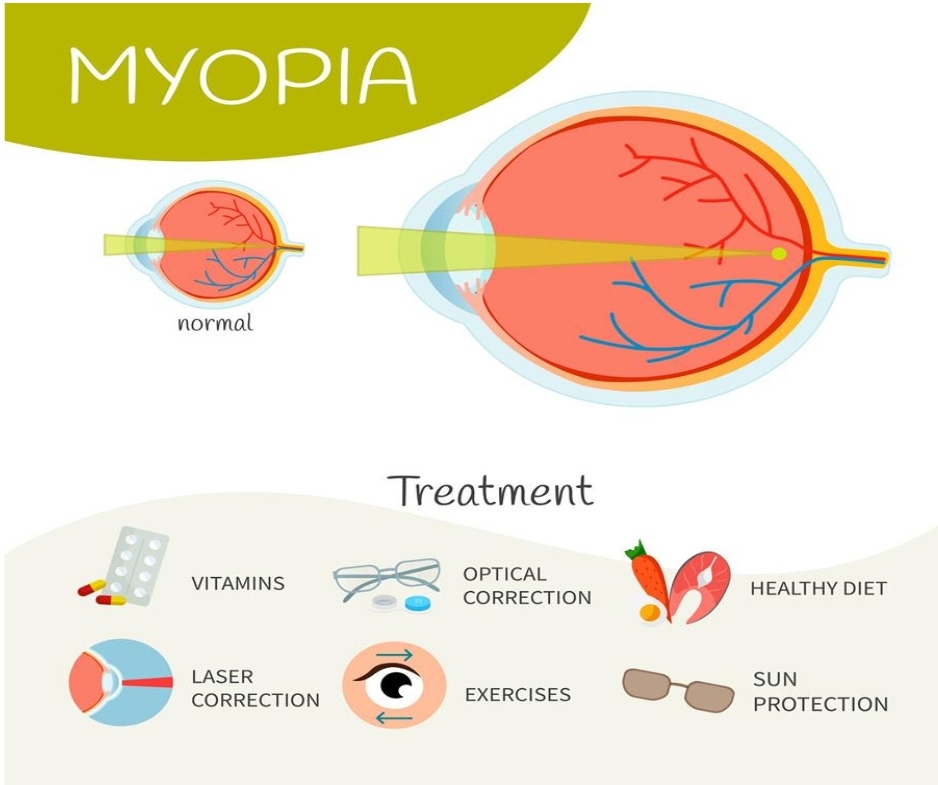What Is Progressive Myopia and Why Early Detection Matters
Progressive myopia is a condition where nearsightedness continues to worsen over time, especially during childhood and adolescence. Unlike regular myopia, which may stabilize, progressive myopia often leads to a steady increase in the prescription needed for glasses or contact lenses. The condition is concerning because higher levels of myopia are linked to more serious eye problems later in life.
How Progressive Myopia Differs From Regular Nearsightedness
Regular myopia typically means the person can see nearby objects clearly but struggles with distance vision. In progressive myopia, the degree of nearsightedness increases each year, often rapidly in children. This makes it harder to manage with just simple vision correction. Regular myopia might remain stable over years, but progressive myopia can lead to extreme prescriptions and complications. The distinction lies in the rate of worsening and the higher risks of eye diseases associated with the progressive type.
Causes And Risk Factors Of Progressive Myopia
Progressive myopia arises from a combination of genetic and environmental factors. Children with one or both parents who are myopic are more likely to develop the condition. Environmental triggers also play a role, such as prolonged near work, excessive screen time, and lack of outdoor activities. Risk factors include:
- Family history of myopia
- Limited time spent outdoors
- High educational or screen-related workload
- Early onset of myopia in childhood
Common Symptoms Parents Should Look For
Progressive myopia may not always be obvious in its early stages, which is why regular eye checkups are important. Some common signs include children squinting frequently, sitting too close to the television, or holding books and devices unusually close to their faces. Teachers may notice children struggling to read from the classroom board. Frequent changes in eyeglass prescriptions are another red flag. Parents should also be mindful of complaints about headaches or tired eyes, which can indicate worsening vision.
The Role Of Genetics And Lifestyle In Myopia Progression
Both genetics and lifestyle significantly influence how progressive myopia develops. A strong family history can increase susceptibility, but lifestyle choices such as spending little time outdoors and engaging in prolonged screen use accelerate the problem. Exposure to natural light has been shown to slow myopia progression, while urban environments with limited outdoor play often see higher rates. Lifestyle factors are modifiable, making it important for parents to encourage balanced routines for children.
Why Early Detection Is Crucial
Early detection of progressive myopia makes it possible to intervene before the condition worsens to high levels. If untreated, it increases the risk of serious complications like retinal detachment, glaucoma, and myopic macular degeneration. By identifying the problem early, eye specialists can recommend treatments to slow down its progression, such as special contact lenses, glasses, or medication.
Diagnostic Methods For Progressive Myopia
Eye specialists use several methods to diagnose progressive myopia accurately. These include standard vision tests, dilated eye exams, and advanced imaging to measure the shape and length of the eye. Axial length measurement is particularly important, as progressive myopia is associated with excessive elongation of the eyeball. Frequent monitoring is necessary, since the condition often changes rapidly. These diagnostic tools not only confirm the presence of progressive myopia but also help track its rate of progression over time.
Potential Complications If Left Untreated
Ignoring progressive myopia can lead to more than just strong glasses prescriptions. High myopia increases the likelihood of structural changes in the eye, leading to conditions such as retinal tears, macular degeneration, and even vision-threatening complications. The risks grow as the severity of myopia increases. Some patients may experience early cataracts or glaucoma, which further impacts quality of life.
Treatment And Management Options
There are multiple treatment options available to manage progressive myopia. These include specialized eyeglasses, contact lenses designed to slow progression, and low-dose atropine eye drops. Lifestyle modifications, such as increasing time outdoors and reducing near work, also play a role. In some cases, a combination of treatments is recommended. Management is personalized based on age, progression rate, and overall eye health. Ongoing monitoring ensures that interventions are adjusted as the child grows and the condition evolves.
Lifestyle Changes That Can Slow Progression
Lifestyle plays a major role in slowing myopia progression. Simple changes, such as encouraging children to play outdoors for at least 1–2 hours daily, can make a difference. Limiting continuous screen use and ensuring proper breaks during reading or studying are also recommended. Proper lighting while studying and maintaining a balanced posture when reading can reduce strain.
Bandra has become known for advanced eye care because of its access to modern facilities, experienced specialists, and well-equipped clinics. Families in this area can find centers offering specialized care for childhood and adult vision problems, including progressive myopia. Choosing a reputed Myopia clinic in Bandra means access to early detection tools, advanced treatments, and personalized management plans, making it a reliable location for this care.






